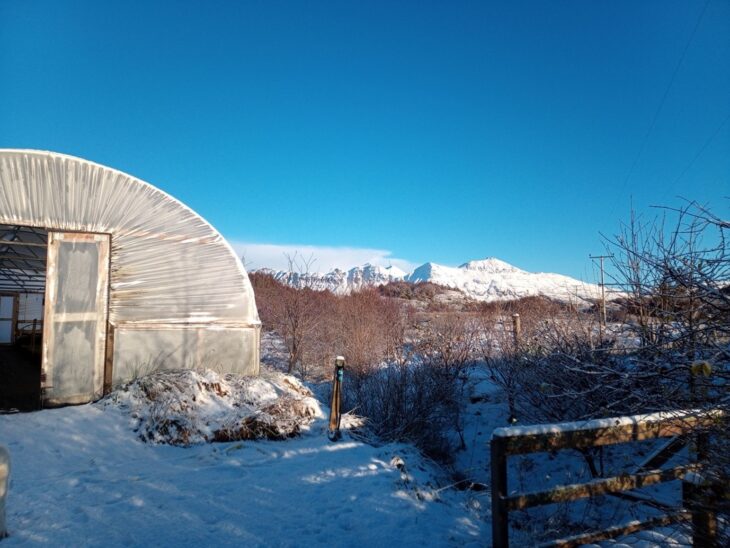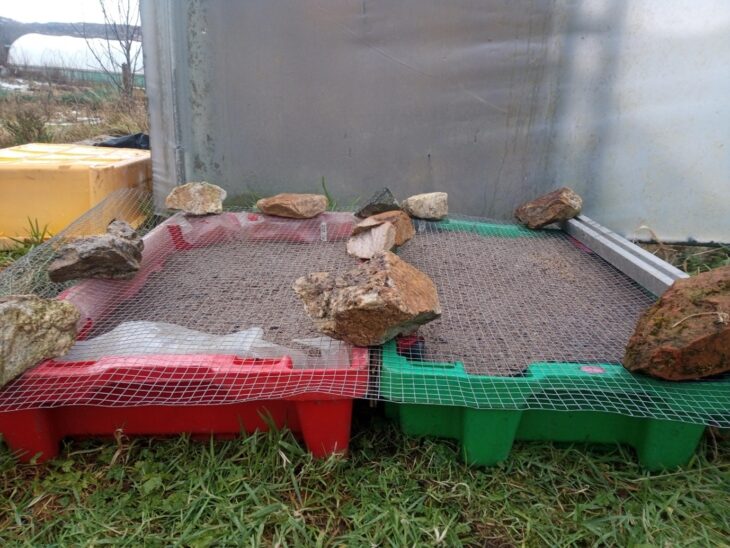The Journey of a Tree Seed- Wintering
For the next blog in this series Tree Nursery Assistant, Josie Gibberd gives us a glimpse into the the journey of a tree seed through the season of winter.
Most tree seeds have an interesting property. It’s called ‘dormancy’ and means seeds can be perfectly alive and well, but do not start to grow, even in conditions that we might see as favourable, i.e they have plenty of water, light, nutrients. It’s thought that this in-built delay is useful to species as it spreads the germination of seeds across a wider time frame, increasing the chances that at least some seeds will grow when conditions are good. Eventually, the dormancy is broken by a combination of factors that aren’t fully understood, but are thought to include, environmental changes and natural processes. Some species don’t require a lot to overcome their dormancy, whilst others are said to be ‘deeply dormant’ and can take quite a lot of persuasion before they venture out of their seed coat.

If they want to get seedlings from their seed, tree growers have to contend with dormancy. To do this, we mimic the conditions that would achieve this naturally. This is called pre-sowing treatment, or pre-treatment. Essentially, this means keeping the seeds at a certain moisture content, at a certain temperature, for a certain amount of time, all of which varies from species to species. In reality for us at Little Assynt Tree Nursery, with most species, this means mixing the clean dry seed with equal parts sand, filling a plant pot with this mixture and standing it outside over winter, protected from rodents. The sand makes sure the seeds do get wet, and therefore experience the chill, but don’t become water-logged, and the conditions outside over winter are those that a seed would naturally go through as the season changes. This is the process we use for most of the species with fleshy seeds- holly, guelder rose, blackthorn, bird cherry etc. as well as ash, sycamore and hazels, although for the number of hazels we use, we need to use fish boxes instead of plant pots. For species where we only have a little seed, for example elder, we achieve the same thing by mixing the seeds with a small amount of slightly damp compost and keeping them in the fridge over winter instead.

Birch and alder seeds are shallowly dormant, so don’t need quite as long of a pre-treatment. For these species we store the seeds dry in the fridge over winter, and then a few weeks before sowing, we wet the seeds a little and put them back in the fridge, mixing them every so often to prevent mould setting in
Some species will begin to germinate after going through one winter, others may take several years before they are ready. Holly and juniper, in particular, can take a while, whilst hazels will often come in two main batches, some in the first spring, and some the following spring.
All of this means that, come March, we should have plenty of seed ready for the next step of the cycle: sowing and transplanting.
While we’re waiting for spring to arrive, there’s plenty of work still to be done in grading our trees.
Little Assynt Tree Nursery is part of the Coigach and Assynt Living Landscape.
Read the first blog from this series: Seed collecting season at Little Assynt Tree Nursery.
Help protect Scotland’s wildlife
Our work to save Scotland’s wildlife is made possible thanks to the generosity of our members and supporters.
Join today from just £3 a month to help protect the species you love.
Preface
For the next blog in this series Tree Nursery Assistant, Josie Gibberd gives us a glimpse into the the journey of a tree seed through the season of winter. Most …
